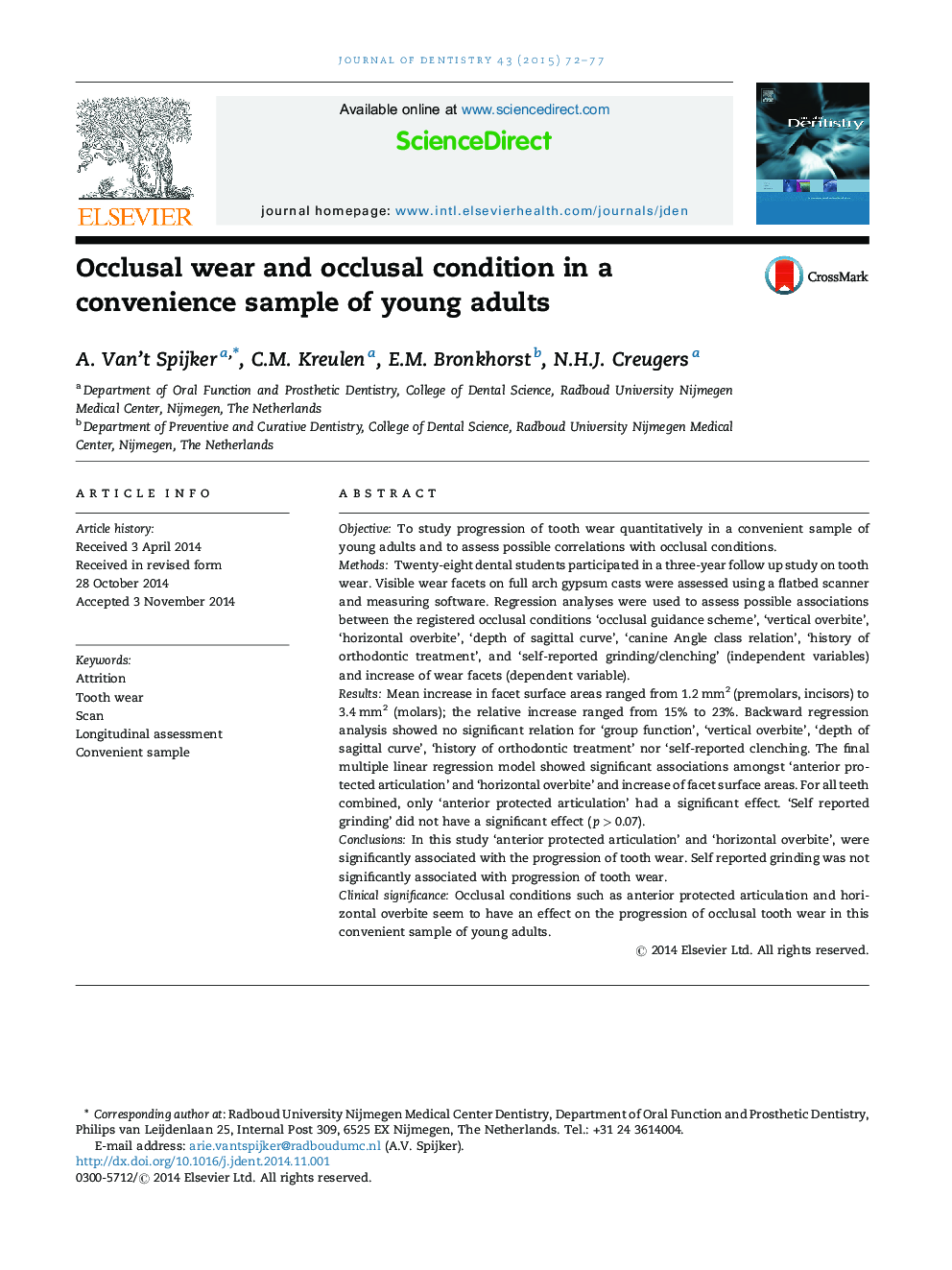| Article ID | Journal | Published Year | Pages | File Type |
|---|---|---|---|---|
| 3146058 | Journal of Dentistry | 2015 | 6 Pages |
ObjectiveTo study progression of tooth wear quantitatively in a convenient sample of young adults and to assess possible correlations with occlusal conditions.MethodsTwenty-eight dental students participated in a three-year follow up study on tooth wear. Visible wear facets on full arch gypsum casts were assessed using a flatbed scanner and measuring software. Regression analyses were used to assess possible associations between the registered occlusal conditions ‘occlusal guidance scheme’, ‘vertical overbite’, ‘horizontal overbite’, ‘depth of sagittal curve’, ‘canine Angle class relation’, ‘history of orthodontic treatment’, and ‘self-reported grinding/clenching’ (independent variables) and increase of wear facets (dependent variable).ResultsMean increase in facet surface areas ranged from 1.2 mm2 (premolars, incisors) to 3.4 mm2 (molars); the relative increase ranged from 15% to 23%. Backward regression analysis showed no significant relation for ‘group function’, ‘vertical overbite’, ‘depth of sagittal curve’, ‘history of orthodontic treatment’ nor ‘self-reported clenching. The final multiple linear regression model showed significant associations amongst ‘anterior protected articulation’ and ‘horizontal overbite’ and increase of facet surface areas. For all teeth combined, only ‘anterior protected articulation’ had a significant effect. ‘Self reported grinding’ did not have a significant effect (p > 0.07).ConclusionsIn this study ‘anterior protected articulation’ and ‘horizontal overbite’, were significantly associated with the progression of tooth wear. Self reported grinding was not significantly associated with progression of tooth wear.Clinical significanceOcclusal conditions such as anterior protected articulation and horizontal overbite seem to have an effect on the progression of occlusal tooth wear in this convenient sample of young adults.
